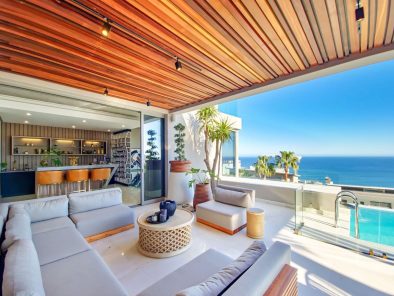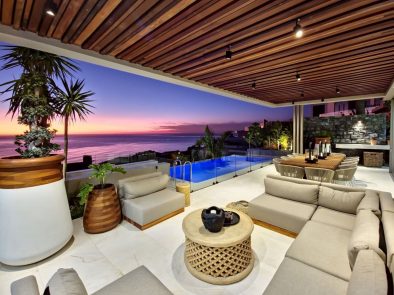Activity in SA housing market remains steady
Uptick in demand for luxury homes – recent R75m sale by Pam Golding Properties
Although facing economic headwinds – including loadshedding and the rising cost of living – with activity mainly in South Africa’s metro markets holding steady, one of the most noticeable trends in the residential property market is a discernible uptick in demand for luxury homes, says Dr Andrew Golding, chief executive of the Pam Golding Property group.
“This market is defined as properties in the R10 million to R100 million price range and beyond, a sector where freehold properties, in particular, have enjoyed an increase in demand. A recent example is a five-bedroom, five-bathroom house in Bantry Bay, Cape Town, sold by Pam Golding Properties to a German buyer for R75 million.” (Photograph attached)
Dr Golding says: “Although there have been some sales transactions in the luxury market segment to international purchasers, most of this demand has been driven by local buyers who have identified specific areas of interest and understand that the current market, characterised generally by motivated sellers and well-priced stock, presents opportunities which offer exceptional value for money.
“Lifestyle is the key consideration for these high-end buyers of luxury property. Securing a unique property is the key consideration – whether a lifestyle property in the Winelands, an apartment on the beach, penthouse or a property with an exceptional view. In many instances, Covid accelerated buyers’ long-term plans.”
Commenting on the market in general, Dr Golding says while the benefits of the interest rate cuts during the early stages of the pandemic have been reversed, with interest rates now marginally higher than they were in the months prior to the pandemic, the impact of the shift to work from home continues to be felt – in part through the reinforcing of the semigration trend.
Says Dr Golding: “While house price inflation has slowed across all price bands – except for the sub-R1 million price band which continues to show accelerating growth of +5.5% in February 2023 (Source: Pam Golding Residential Property Index) , ooba’s average overall purchase price rebounded to R1.446 million in February 2023, which is close to the December 2022 record high of R1.452 million. Meanwhile the average price paid by first-time buyers inched higher to R1.14 million in February 2023, slightly below the previous highs in Q2 in 2022.
“Notably however, the coastal premium (within 5km of the coastline) continues to widen – reaching 3.8% in November 2022 (latest available Lightstone data) as coastal properties continue to register stronger price growth than non-coastal homes. The gap between freehold and sectional title house price inflation, which peaked at 4.0% in Q3 2021 with the shift to larger homes during the initial stages of the work from home trend, has narrowed to just +0.35% in February 2023, below the disparity evident in the months before Covid.
“Furthermore,” says Dr Golding, “also according to ooba, applications from first-time buyers accelerated again in February 2023, rising to 50.1% from a low of 45.8% in December 2022. Encouragingly for home purchasers seeking finance, ooba’s average loan-to-value ratio also rose further in February 2023, increasing to 92%, while both 100% mortgage applications and the mortgage approval rate rose in the same month, increasing to 57.3% and 84.2% respectively – with approval rates remaining elevated near recent record highs.
“Also positively, ooba’s applications for investment / buy-to-let properties rose to 8.48% (of total applications) in February 2023, a level last seen in late-2009, with applications for holiday homes also rising to 0.4% of total applications, up from just 0.2% in December 2022.”
Dr Golding says interestingly, two key factors have been underpinning the market:
“Structural changes to where South Africans want to live – which is attributable to the pandemic work from home trend and the growing realisation that some municipalities are seemingly financially unsustainable and/or municipal service delivery is erratic. Both these factors have resulted in increased demand among homeowners to relocate somewhere that offers the perception of better lifestyle, more affordable homes or better governance. This has generated an additional element of activity in the housing market over and above what a growing population and the prevailing economic environment would suggest.
“The second factor is the supportive lending environment which has resulted from a competitive mortgage environment between banks. This has resulted in high approval rates, competitive loan pricing and a willingness to extend 100% – or larger – loans.”
For further information visit www.pamgolding.co.za.
Posted by The Know - Pam Golding Properties







